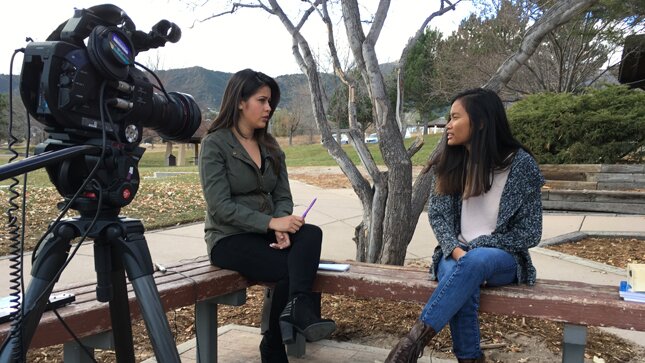Suicide in Colorado: Reversing Silence and Stigma

Recognized for "going above and beyond to carefully, respectfully, and accurately portray the issue of suicide" by the Suicide Prevention Coalition of Colorado (May 2017).
Madison Legg was about to fall asleep on the night of Nov. 2, 2014, when she heard a loud knock at the door. The Colorado Springs teenager saw two police officers enter her home.
The police were responding to a graphic photograph of a young man visibly injured that was posted on Facebook along with a suicide note. The person in the photo was Jacob, Madison’s brother.
Jacob survived his attempt, but the tragic incident points to an increasing pattern affecting Colorado. In 2014, Colorado had the fifth highest suicide rate in the nation, at 20.2 deaths per 100,000 residents, according to the most recent data from the Colorado Department of Public Health and Environment. Colorado’s rate is one and a half times the national rate of 13.3 deaths per 100,000. Last year, there were 1,093 deaths by suicide in the state, a significant increase from 909 suicide deaths in 2011.
Among Colorado’s youth — ages 10 to 24 — suicide is the second leading cause of death. About one in seven kids say they have made a suicide plan in the last year. Gay and lesbian young people are almost three times more likely to have a suicide plan than heterosexual youth. And more than half of the state’s transgender youth say they have had a suicide plan in the past year.
“It’s not these gender identities or sexual orientation that is causing negative mental health outcomes,” says Sarah Brummett, director of the Colorado Office of Suicide Prevention. “It’s the bias and the stigma and discrimination that individuals face on a daily basis. Having safe spaces where you feel included and respected, that is what protects our youth.”
Suicide rates vary by where people live in Colorado. Rural counties had a higher suicide rate compared to their urban counterparts.
In Summit County, ten people have committed suicide this year, through the first week of December. The county’s population is about 29,000 people. That’s an unofficial suicide rate of 34 per 100,000 people, nearly three times the national rate. (Want to know the latest mortality data in your county, including suicide? Check out this state database for 2014)
Lack of mental health resources, geographic isolation and higher poverty levels all contribute to this disparity, says Brummett. Access to firearms in these counties is also a risk factor for suicide.
Not all people who express suicidal thoughts and actions are diagnosed with a mental illness or depression. Most may be experiencing a moment of crisis or current depressed mood. In fact, 52.9% of people who committed suicide in Colorado between 2011 and 2015 were known to have been experiencing depressed moods, and 48.5% percent were experiencing a mental health problem, at the time of their deaths.
While indications of suicidal thoughts and actions vary among individuals, experts like Abigail Tucker, the clinic director of intensive services at the Community Reach Center in Westminster, advise to look out for signs of depression, isolation and withdrawal. Other warning signs include anxiety or rage.
For more information on suicide prevention and education, visit the Colorado Office of Suicide Prevention at www.coosp.org. If you, a friend or a family member need help now, please call the National Suicide Prevention Lifeline at 1-800-273-TALK (8255) or the Colorado Crisis and Support Line at 1-844-493-TALK (8255) and you’ll be connected to a trained counselor at a crisis center in your area, anytime 24/7.

